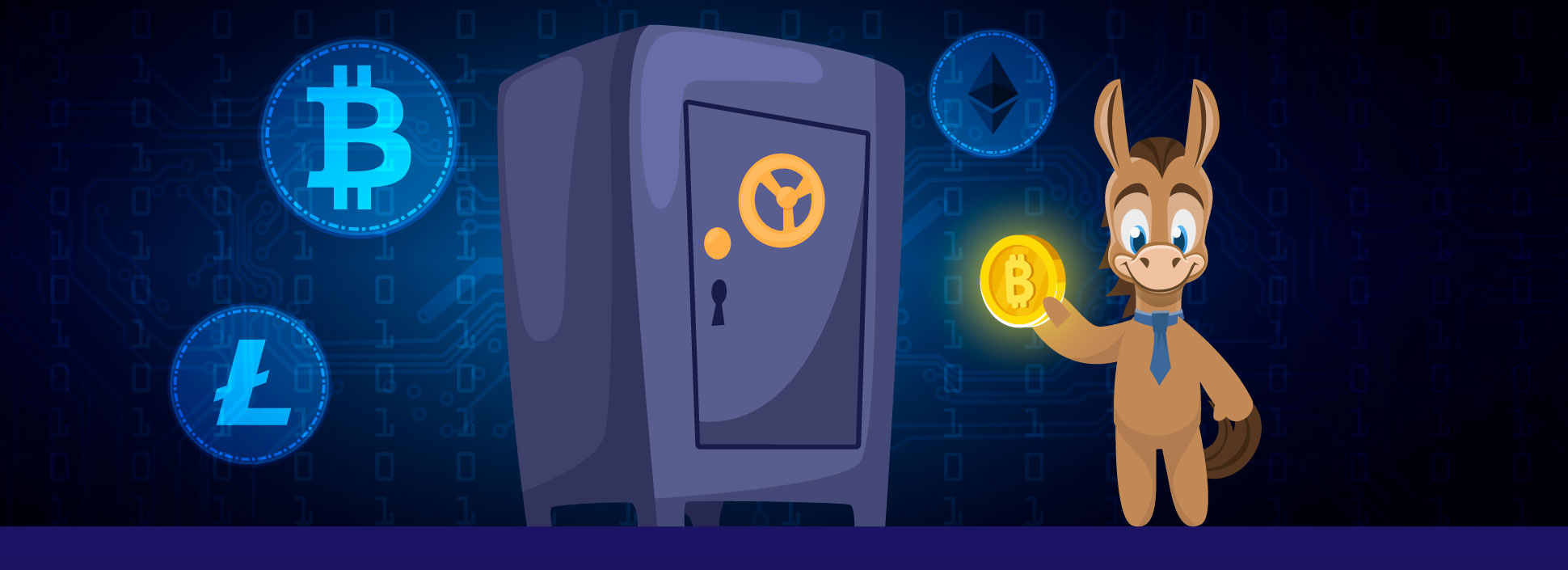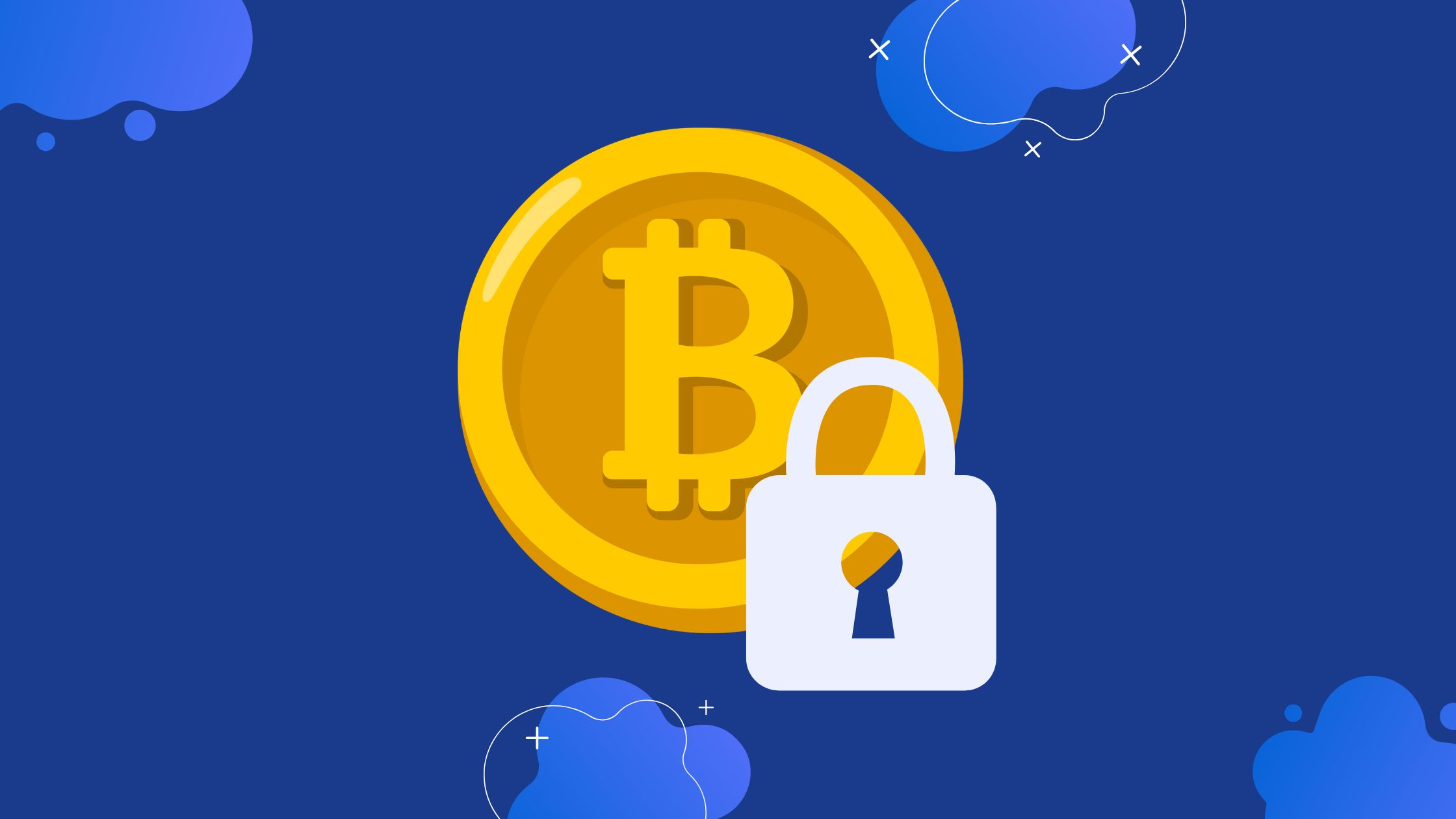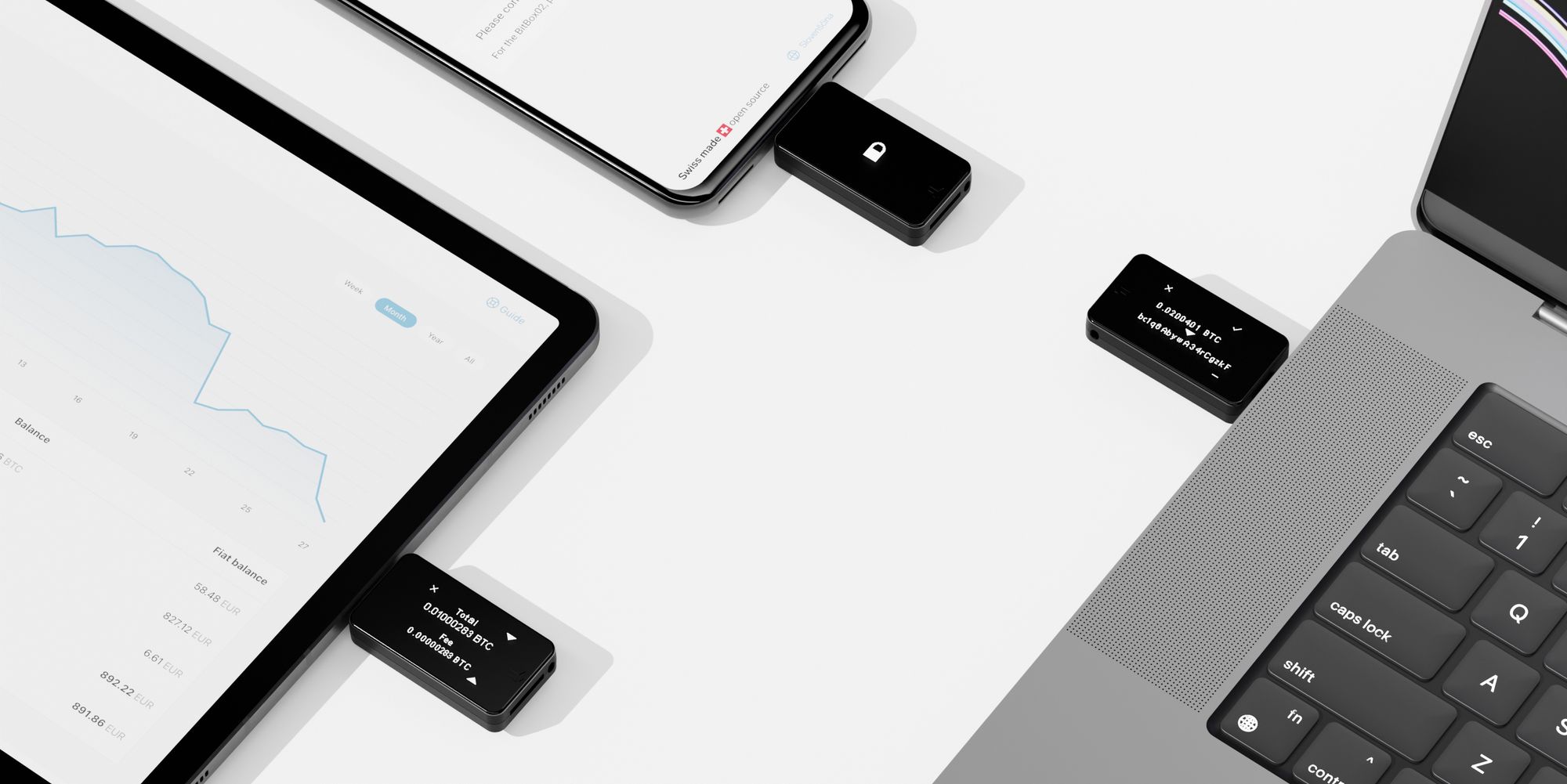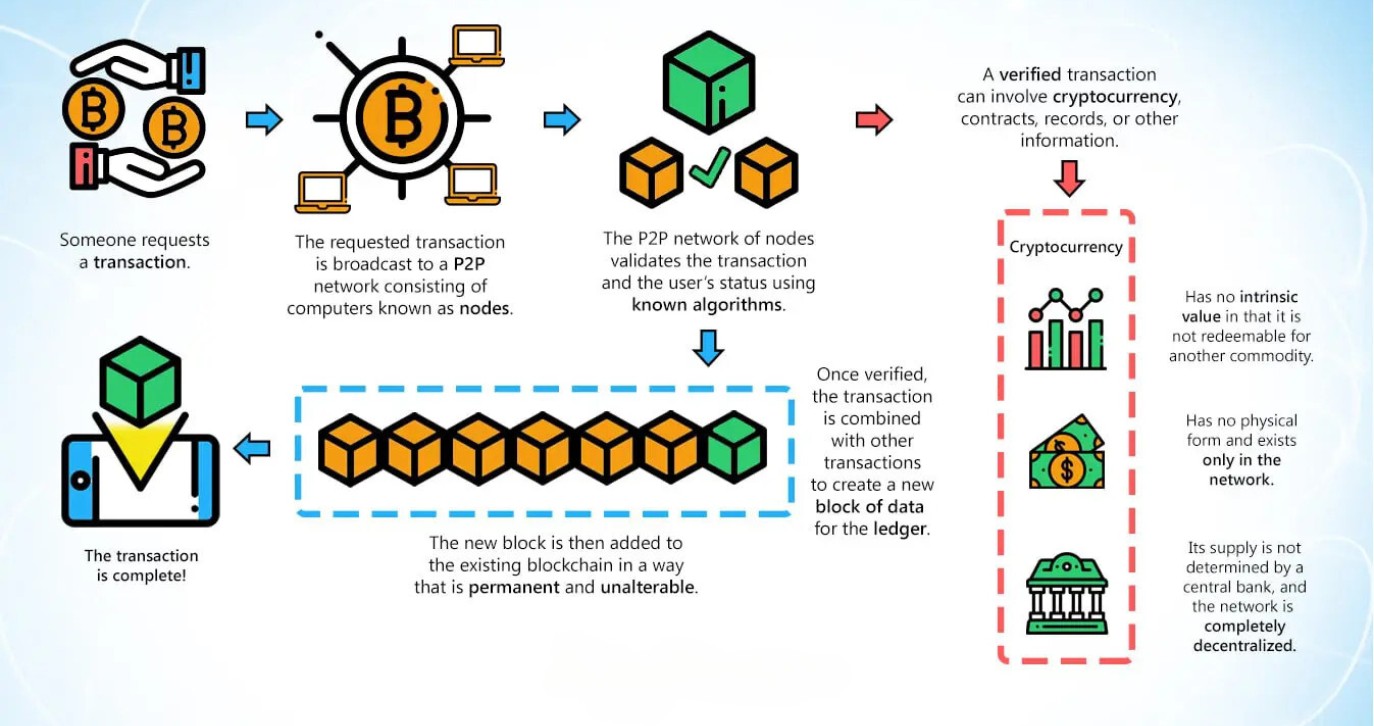Introduction
Cryptocurrency has become increasingly popular as a digital form of currency, offering decentralized transactions and a secure way to store value. As more people venture into the realm of crypto investments, it is crucial to understand how to store these digital assets securely.
Cryptocurrency storage refers to the practice of storing and safeguarding digital currency tokens. Unlike traditional banking, where accounts and transactions are managed by financial institutions, cryptocurrencies rely on digital wallets for storage and transactions.
These wallets come in various forms, each with its own level of security and convenience. Understanding the different types of cryptocurrency wallets and their usage is essential for anyone venturing into the world of digital currencies.
In this article, we will explore the various types of cryptocurrency wallets, including hot wallets, cold wallets, paper wallets, and hardware wallets. We will discuss their features, benefits, and how to use them effectively. Furthermore, we will also provide some best practices and tips for keeping your cryptocurrency safe.
Whether you’re a seasoned investor or just getting started in the world of cryptocurrency, knowing how to store your digital assets securely is of utmost importance. With the right knowledge and precautions, you can protect your investments and gain peace of mind.
What is Cryptocurrency Storage?
Cryptocurrency storage refers to the process of securely storing and managing digital currency tokens, such as Bitcoin, Ethereum, or Litecoin. Unlike traditional fiat currencies, cryptocurrencies are purely digital, existing only in the form of code recorded on a blockchain. As a result, they require a specialized storage system to ensure their security and accessibility.
Unlike traditional banking where funds are held in a centralized account managed by a financial institution, cryptocurrencies rely on digital wallets. These wallets act as secure containers that store the cryptographic keys required to access and transfer your digital assets. They allow you to receive, send, and store cryptocurrencies while maintaining control and ownership over your funds.
Each cryptocurrency wallet comes with a unique address associated with your digital assets. This address is a string of alphanumeric characters used to receive funds from other users. When you want to send cryptocurrencies, you will need to input the recipient’s wallet address and authorize the transaction using your private key or password.
It is important to note that cryptocurrencies themselves are not stored in wallets. Instead, the wallets store the private keys that allow you to access and manage your digital assets on the blockchain. These private keys are essentially secret codes that grant you ownership of your funds and the ability to sign transactions.
Security is paramount when it comes to cryptocurrency storage. Since cryptocurrencies are decentralized and transactions cannot be reversed, the responsibility falls on the owner to safeguard their private keys and wallets. Any compromise in security could result in the loss or theft of your digital assets.
In the next sections, we will explore the different types of cryptocurrency wallets and discuss their features, benefits, and how to use them effectively. Understanding these options will help you choose the most suitable storage solution for your cryptocurrency holdings.
The Different Types of Cryptocurrency Wallets
When it comes to storing cryptocurrencies, there are several types of wallets to choose from. Each wallet has its own unique features, level of security, and accessibility. Understanding the different types of wallets will help you make an informed decision on which one is best suited for your needs. Let’s explore the various options:
1. Hot Wallets: Hot wallets are digital wallets that are connected to the internet. They are generally more convenient for frequent transactions, as they allow quick and easy access to your funds. Hot wallets are available in various forms, such as online wallets, mobile wallets, and desktop wallets. While they offer convenience, they are also more susceptible to hacking and malware attacks.
2. Cold Wallets: Cold wallets, on the other hand, are offline wallets that are not connected to the internet. This makes them highly secure as they are not vulnerable to online threats. Cold wallets can be in the form of hardware wallets or paper wallets. They are ideal for long-term storage of large amounts of cryptocurrency.
3. Paper Wallets: Paper wallets are physical copies of your cryptocurrency keys, usually in the form of a QR code or a printed document. They provide an air-gapped storage solution, as they are not connected to the internet. Paper wallets are highly secure if generated and stored correctly, making them a popular choice for those concerned about online vulnerability.
4. Hardware Wallets: Hardware wallets are specialized devices designed to securely store your cryptocurrency keys offline. They are small, portable devices that connect to your computer or smartphone via USB or Bluetooth. Hardware wallets provide an extra layer of security by keeping your private keys isolated from your computer or mobile device. They are considered one of the most secure ways to store cryptocurrencies.
Each type of wallet has its own advantages and considerations. Hot wallets offer convenience but are more vulnerable to hacking. Cold wallets, such as hardware and paper wallets, provide enhanced security but may have limitations in terms of accessibility. It’s essential to assess your needs, level of technical expertise, and the amount of cryptocurrency you’re storing when choosing a wallet type.
Now that we’ve explored the different types of cryptocurrency wallets, it’s time to delve into the details of how to use them effectively and securely. In the next sections, we will discuss the usage, setup, and best practices for each type of wallet mentioned above.
Hot Wallets: What They Are and How to Use Them
Hot wallets are a type of cryptocurrency wallet that is connected to the internet, making them easily accessible for transactions. They come in different forms, including online wallets, mobile wallets, and desktop wallets. Here, we will explore what hot wallets are, their advantages, and how to use them effectively.
Online Wallets: Online wallets, also known as web wallets, are hosted on websites or platforms provided by cryptocurrency exchanges or third-party service providers. They can be accessed through a web browser, offering convenience, ease of use, and the ability to manage multiple cryptocurrencies in one place. However, relying on a third party means you have to trust them to keep your funds secure.
Mobile Wallets: Mobile wallets are smartphone applications that allow you to store and manage your cryptocurrencies. They offer a convenient way to carry your digital assets with you wherever you go. Mobile wallets are typically user-friendly, with intuitive interfaces and built-in security features such as PIN codes or biometric authentication. However, you need to ensure your device is secure and protected from malware or unauthorized access.
Desktop Wallets: Desktop wallets are software applications that you install on your computer or laptop. They give you full control over your private keys and offer a higher level of security compared to online or mobile wallets. Desktop wallets can be further categorized into full-node wallets, which require you to download and store the entire blockchain, and lightweight wallets, which use a remote server to access the blockchain. It’s important to keep your computer protected from malware and regularly update your wallet software.
To use a hot wallet effectively, you need to follow a few best practices to ensure the security of your digital assets:
- Choose a reputable wallet provider: When selecting a hot wallet, do thorough research to find a reputable and trustworthy provider. Look for wallets that have been audited for security and have a history of prompt updates and bug fixes.
- Enable two-factor authentication (2FA): Two-factor authentication adds an extra layer of security by requiring a second piece of evidence, such as a unique code generated on your mobile device, in addition to your password.
- Use strong and unique passwords: Create a strong password that includes a combination of upper and lowercase letters, numbers, and special characters. Avoid using common passwords or reusing passwords across different platforms.
- Keep your software up to date: Regularly update your wallet software to protect against potential vulnerabilities and security flaws. Wallet providers often release updates to address security weaknesses and improve overall performance.
- Backup your wallet: Create regular backups of your wallet and store them securely offline. This ensures that, even if your device is lost or compromised, you can restore your wallet and regain access to your funds.
Hot wallets provide convenience and quick access to your digital assets. However, due to their internet connectivity, they are more susceptible to hacking and malware attacks compared to offline wallets. It’s important to balance ease of use with security considerations when using hot wallets for storing and managing your cryptocurrencies.
Cold Wallets: What They Are and How to Use Them
Cold wallets are a type of cryptocurrency wallet that is not connected to the internet, providing an additional layer of security for storing your digital assets. They are ideal for long-term storage and offer a higher level of protection against hacking and online threats. Let’s explore what cold wallets are, their advantages, and how to use them effectively.
Hardware Wallets: A hardware wallet is a physical device specifically designed to store cryptocurrency securely. It keeps your private keys offline and requires you to physically connect the device to a computer or mobile device when making transactions. Hardware wallets offer robust security features, such as encryption, PIN codes, and even built-in screens for verifying transactions. The offline nature of hardware wallets makes them highly resistant to hacking attempts.
Paper Wallets: A paper wallet is a physical copy of your cryptocurrency keys, usually in the form of printed QR codes or written wallet addresses. To create a paper wallet, you generate a wallet address and its corresponding private key offline. Once generated, you print or write down the keys and keep them in a secure physical location. Paper wallets are completely offline and offer excellent protection against cyberattacks, as they are not susceptible to online threats.
Using cold wallets effectively requires following a few best practices to ensure the security of your digital assets:
- Acquire from trusted sources only: When obtaining a hardware wallet, purchase it directly from the manufacturer or an authorized reseller to avoid counterfeit or tampered devices. For paper wallets, use trusted offline generators or create them manually to eliminate the risk of malware or keyloggers.
- Set up securely: Follow the instructions provided by the hardware wallet manufacturer to set up your device securely. This often includes setting a strong PIN code and enabling additional security features.
- Store securely: Keep your hardware wallet in a safe place, such as a locked drawer or a secure wallet pouch. For paper wallets, store them in a fireproof, waterproof, and tamper-evident container, away from prying eyes.
- Make regular backups: Create multiple copies of your wallet’s recovery seed or the printed private keys associated with your paper wallet. Store these backups in separate secure locations to ensure redundancy.
- Verify transactions: When using a hardware wallet, always verify the transaction details on the device’s screen before approving them. This helps prevent any malicious activity or unauthorized transactions.
Cold wallets provide the highest level of security for your cryptocurrencies, as they are not susceptible to online attacks. However, they may be less convenient for frequent transactions compared to hot wallets. It’s crucial to assess your needs and the level of security required when deciding between hot and cold wallets.
By following best practices and taking necessary precautions, you can confidently use cold wallets to store your digital assets securely for the long term, knowing that your cryptocurrencies are protected from online threats.
Paper Wallets: A Simple and Secure Way to Store Cryptocurrency
Paper wallets offer a straightforward and secure method for storing cryptocurrency offline. As the name suggests, a paper wallet is a physical copy of your cryptocurrency keys, typically in the form of printed QR codes or written wallet addresses. This method provides an air-gapped storage solution, making it highly secure against online attacks. Let’s explore the concept of paper wallets and how to use them effectively.
To create a paper wallet, you generate a wallet address and its corresponding private key offline. There are various online tools available that allow you to create paper wallets securely. However, it is recommended to use offline generators or manually generate the wallet to eliminate the risk of malware or keyloggers compromising your private keys.
Once you have generated the wallet, you print or write down the keys on a piece of paper. It is essential to use high-quality paper and ink to ensure the longevity and legibility of the printed keys. Additionally, consider making multiple copies of your paper wallet to have backups in case of loss or damage.
Paper wallets offer several advantages for storing cryptocurrency securely. Firstly, being offline, they are not susceptible to hacking attempts or online threats. As long as you keep the physical copy safe, your digital assets remain secure. Additionally, paper wallets provide a higher level of anonymity, as they are not linked to any personal information or online accounts.
To use a paper wallet effectively, it is vital to follow best practices:
- Ensure secure generation: Generate your paper wallet in a secure and trusted environment. Use proven offline generators or follow proper manual generation procedures to eliminate the risk of compromised private keys.
- Store securely: Keep your paper wallet in a safe and secure location. Consider using a fireproof, waterproof, and tamper-evident container such as a safe or a safety deposit box.
- Protect from physical damage: Keep your paper wallet away from direct sunlight, moisture, and extreme temperatures. Consider laminating or using protective sleeves to prevent wear and tear.
- Make multiple copies: Create multiple copies of your paper wallet and store them in separate secure locations. This redundancy ensures that even if one copy is lost or damaged, you can still access your funds.
- Disable the printing history: When printing your paper wallet, ensure that you clear the printer’s print history afterwards. This prevents anyone from potentially accessing the keys through the printer’s memory.
It’s important to note that once you decide to access the funds stored in a paper wallet, you need to transfer the funds to a digital wallet using the private key. This is typically done by scanning the QR code on the paper wallet or manually entering the wallet address and private key. It is advisable to transfer only the desired amount of cryptocurrency to a digital wallet, keeping the remaining funds securely stored in the paper wallet.
Paper wallets provide a simple and secure method for storing cryptocurrency offline. By following best practices and taking necessary precautions, you can confidently use paper wallets to protect your digital assets from online threats and maintain control over your funds.
Hardware Wallets: The Most Secure Option for Storing Cryptocurrency
When it comes to securing your cryptocurrency, hardware wallets offer the highest level of security. These specialized devices are designed to store your private keys offline, providing an extra layer of protection against online threats. Hardware wallets are widely considered the most secure option for storing and managing your digital assets. Let’s explore what hardware wallets are and why they are the preferred choice for cryptocurrency storage.
Hardware wallets are physical devices that securely store your private keys. They are typically small, portable devices that connect to your computer or mobile device via USB or Bluetooth. Hardware wallets have built-in security features, such as encryption, PIN codes, and even screens for verifying transactions. This ensures that your private keys never leave the device, reducing the risk of exposure to potential hacking attempts or malware.
One of the primary advantages of hardware wallets is their protection against keyloggers or other types of malware that can compromise your private keys. Since the private keys are stored securely within the hardware wallet itself and cannot be accessed by external devices, any attempts to steal your keys are significantly reduced.
To use a hardware wallet effectively, consider the following best practices:
- Choose a reputable brand: Select a hardware wallet from a reputable manufacturer with a strong track record of security and regularly updated firmware. Popular brands include Ledger, Trezor, and KeepKey.
- Keep firmware up to date: Regularly update your hardware wallet’s firmware to ensure you have the latest security enhancements and bug fixes. Manufacturers often release firmware updates to address potential vulnerabilities.
- Set a strong PIN code: Choose a unique and complex PIN code for your hardware wallet. This adds another layer of security, making it harder for unauthorized individuals to access your funds even if they have physical access to the device.
- Verify transactions on the device: Whenever you make a transaction using a hardware wallet, verify the transaction details displayed on the device’s screen before confirming it. This step ensures that you are approving the correct transaction and prevents malicious or unauthorized transactions.
- Have a backup plan: Create a backup of the recovery seed provided by your hardware wallet. This seed is essentially a backup of your private keys, allowing you to recover your funds if your hardware wallet is lost, damaged, or stolen.
Hardware wallets provide convenience, security, and peace of mind for cryptocurrency holders. They are particularly suitable for those who hold significant amounts of digital assets or value the highest level of security for their investments. However, it’s important to note that while hardware wallets are highly secure, they do come with a cost. It’s essential to weigh the benefits against the investment required to purchase a hardware wallet.
By following best practices and using a hardware wallet, you can confidently store your cryptocurrencies knowing that your private keys are safely stored offline and are not vulnerable to online threats or unauthorized access.
Best Practices for Storing Cryptocurrency
Storing cryptocurrency securely is essential to protect your digital assets from loss or theft. While there are different types of wallets available, following best practices will help enhance the security of your storage solution. Here are some important practices to consider when storing your cryptocurrency:
- Use Multiple Wallets: Consider diversifying your cryptocurrency holdings across multiple wallets. By not storing all your coins in one place, you decrease the risk of losing all your funds in case of a wallet compromise.
- Create Strong and Unique Passwords: When setting up a wallet, use strong, unique passwords that are difficult for others to guess. Avoid reusing passwords and consider using a password manager to securely store your login credentials.
- Enable Two-Factor Authentication (2FA): Enable 2FA whenever available to add an extra layer of security to your wallet. This often involves verifying your identity through a second device or a specific app.
- Keep Software Up to Date: Regularly update the software of your wallets, including both desktop and mobile wallets, to ensure you benefit from the latest security patches and bug fixes.
- Be Cautious of Phishing Attempts: Be vigilant when interacting with cryptocurrency-related websites and emails. Avoid clicking on suspicious links, and always double-check URLs before entering sensitive information.
- Backup Your Wallets: Regularly backup your wallets and secure the backup files in offline storage locations. This protects against data loss due to hardware failure, accidental deletion, or natural disasters.
- Use Encrypted and Secure Devices: Utilize devices and computers that have up-to-date security software and encryption. Avoid using public or unsecured networks when accessing your wallets.
- Test Small Transactions: Before making significant transactions, consider testing the wallet with a small amount first. This ensures that the transaction process is secure and that you have entered the correct recipient address.
- Be Cautious of Third-Party Services: Research and use reputable third-party services, such as exchanges and wallet providers. Be cautious of suspicious or unknown platforms that may put your funds at risk.
- Physically Secure Your Wallet: If using hardware wallets or paper wallets, keep them in secure locations, such as a safe or safety deposit box to protect against physical theft or damage.
By following these best practices, you can significantly enhance the security of your cryptocurrency storage. Always prioritize security over convenience and stay informed about the latest developments and security measures in the cryptocurrency space. Implementing these practices will help safeguard your digital assets and ensure that you have peace of mind while managing your cryptocurrency investments.
Tips for Keeping Your Cryptocurrency Safe
Cryptocurrency investments can be highly lucrative, but they also come with risks. To ensure the safety of your digital assets and protect yourself from potential threats, it’s important to follow certain tips and precautions. Here are some valuable tips for keeping your cryptocurrency safe:
- Do Your Research: Educate yourself about the various cryptocurrencies you invest in and the wallets you use. Stay updated on the latest security practices and any vulnerabilities discovered in the crypto space.
- Secure Your Devices: Keep your computer, smartphone, and other devices used for cryptocurrency transactions secure. Install reputable antivirus software, use strong passwords, and enable device lock features.
- Use Wallet Encryption: If your wallet supports encryption, enable this feature to add an extra layer of protection to your stored private keys.
- Beware of Public Wi-Fi: Avoid accessing your wallets or making transactions using public Wi-Fi networks. These networks can be vulnerable to hacking attempts, potentially exposing your private keys or personal information.
- Be Cautious of Social Engineering Attacks: Be wary of unsolicited communications, such as emails or messages, requesting personal information or providing suspicious links. Beware of phishing attempts that aim to steal your login credentials.
- Regularly Update Software: Keep your wallets, devices, and any other related software up to date. Developers release updates to address security vulnerabilities, so staying updated is crucial for maintaining the integrity of your wallets.
- Enable Transaction Confirmation: Configure your wallet settings to require confirmation or authorization for every transaction. This can help prevent unauthorized transactions from being carried out without your knowledge.
- Use Multi-Factor Authentication: Enable multi-factor authentication (MFA) on your wallets whenever possible. This additional layer of security requires you to provide multiple factors of verification before accessing your funds.
- Store Backups Securely: Make regular backups of your wallet data, and securely store them in multiple offline locations. This way, even if you experience data loss or device failure, you can restore your wallet and regain access to your funds.
- Consider a Dedicated Device: Use a dedicated device for managing your cryptocurrency, separate from your everyday activities. This reduces the risk of malware or keyloggers compromising your wallet’s security.
By implementing these tips and staying vigilant, you can significantly reduce the risks associated with storing and managing cryptocurrency. Remember that while the blockchain technology behind cryptocurrencies offers strong security, it’s essential to take personal precautions to safeguard your assets and protect yourself from potential threats in the digital realm.
Conclusion
Storing cryptocurrency securely is vital for protecting your digital assets from loss, theft, and unauthorized access. Whether you choose hot wallets, cold wallets, paper wallets, or hardware wallets, it’s crucial to follow best practices and take necessary precautions to ensure the safety of your investments.
Hot wallets offer convenience and quick access for frequent transactions, but they are more susceptible to hacking and online threats. Cold wallets, such as hardware wallets and paper wallets, provide the highest level of security by keeping your private keys offline. They are ideal for long-term storage of significant amounts of cryptocurrency.
Whichever type of wallet you choose, there are common security practices to keep in mind. Use strong and unique passwords, enable two-factor authentication, and keep your software up to date. Be cautious of phishing attempts, and always verify transactions before approving them.
In addition to wallet-specific practices, there are general tips for keeping your cryptocurrency safe. Do thorough research, secure your devices, avoid public Wi-Fi, and be cautious of social engineering attacks. Regularly update your software, enable multi-factor authentication, and store backups in secure offline locations.
By following these guidelines and staying informed about the latest security practices in the cryptocurrency space, you can confidently store and manage your digital assets. Remember to balance convenience with security, and regularly review and update your security measures as needed.
As the cryptocurrency landscape continues to evolve, it’s essential to stay vigilant and adapt to new security challenges and emerging technologies. By prioritizing security and implementing best practices, you can protect your cryptocurrency investments and enjoy the benefits of this exciting digital frontier.

























